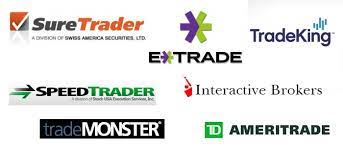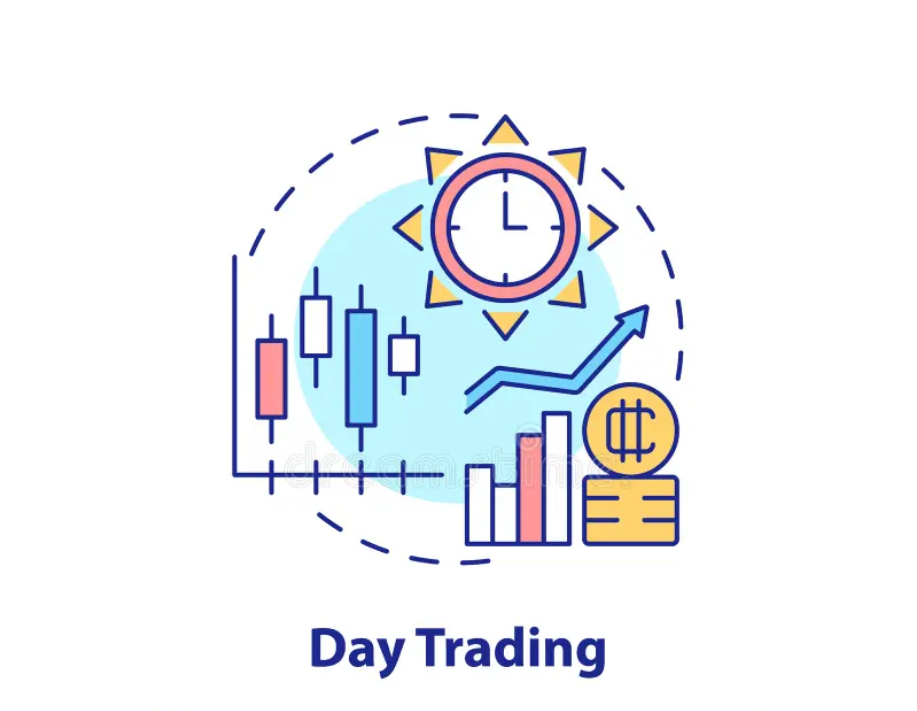- What is the stock market, and why is it important?
The stock market is a dynamic platform where investors buy and sell shares of publicly traded companies. It plays a crucial role in the global financial system by facilitating the flow of capital, allowing businesses to raise funds for expansion and innovation. For individuals, the stock market offers opportunities to invest in the growth of companies, generate profits, and build wealth. Understanding its fundamental principles and mechanics is essential for anyone looking to participate in this vital aspect of the economy.
- What are the key factors that influence the stock market?
Several key factors shape the movements of the stock market and determine investor sentiment. Economic indicators such as GDP growth rates, employment figures, and inflation levels provide insights into the overall health of the economy and can significantly impact stock prices. Corporate performance, reflected in earnings reports, revenue growth, and profit margins, directly affects the valuation of individual stocks. Additionally, market sentiment, which encompasses investor perceptions and reactions to news, events, and trends, also plays a crucial role in influencing stock prices. Understanding these factors helps investors navigate the complexities of the stock market and make informed decisions.
- What are the advantages and disadvantages of investing in the stock market?
Investing in the stock market offers several advantages. It provides the potential for wealth growth through capital appreciation and dividends, allowing investors to accumulate wealth over time. The stock market also offers diversification opportunities, enabling investors to spread their investments across various sectors and companies, thereby reducing risk. Moreover, the stock market's liquidity allows for the easy buying and selling of stocks, providing flexibility and quick access to cash. Additionally, it serves as an economic indicator, reflecting the health of the economy and investor confidence.
However, investing in the stock market also comes with disadvantages. Market volatility can lead to significant price fluctuations, resulting in potential losses. The stock market is also susceptible to broader economic conditions and downturns, which can negatively impact investments. Effective risk management requires careful analysis and strategic decision-making, making it essential for investors to understand both the advantages and disadvantages of stock market investing.
BASIC MODULE
THIS COURSE WILL COVER MOST OF THE FOUNDAMENTALS THAT WILL ENALBE
YOU TO GET STARTED INTO TRADING WITH EASE AND HIGH CONFIDENCE

Introduction to Stock markets
The stock market serves as a dynamic and complex arena where investors buy and
sell shares of publicly traded companies, aiming to generate pro ts and build wealth.
Functioning as a critical component of the global nancial system, the stock market
facilitates the ow of capital, enabling businesses to raise funds for expansion and
innovation while offering individuals the opportunity to invest in the growth of these
enterprises
- Understanding the fundamental principles and mechanics of the stock market is
essential for anyone looking to participate in this pivotal aspect of the economy.

CHAPTER I: INTRODUCTION TO STOCK MARKET

Chapter II : FACTORS UNDER STOCK MARKET
Several key factors in uence the stock market, shaping its movements and
determining investor sentiment. Economic indicators, such as GDP growth rates,
employment gures, and in ation levels, provide insights into the overall health of the
economy and can signi cantly impact stock prices. Corporate performance, re ected
in earnings reports, revenue growth, and pro t margins, directly affects the valuation
of individual stocks
- Understanding these factors is essential for investors seeking to navigate the
complexities of the stock market and make informed decisions
Foundational elements of nancial transparency and decision-making for businesses.
Accounting involves systematically recording, analyzing, and reporting nancial
transactions to provide a clear picture of a company's nancial health. Financial
statements, including the balance sheet, income statement, and cash ow statement,
are critical tools in this process.
- Together, these documents offer stakeholders, including investors, creditors, and
management, essential insights into nancial performance and stability, enabling
informed decision-making and strategic planning

CHAPTER III: ACCOUNTING AND
FINANCIAL STATEMENTS

CHAPTER IV: TECHNICAL ANALYSIS
Used by traders and investors to evaluate and forecast the future price movements of
securities based on historical market data, primarily price and volume. Unlike
fundamental analysis, which focuses on a company's intrinsic value through nancial
statements and economic indicators, technical analysis relies on chart patterns,
trends, and statistical indicators to identify potential trading opportunities.
- This approach requires a keen understanding of market psychology and the
ability to interpret complex data visualizations, offering a systematic way to
navigate the dynamic nature of nancial markets.
KEY LESSONS
- Introduction to Stockmarket
- History of Stock Market in the Phillipines
- Types of Securities
- Market Value
- Stock Investing Strategies
- Risk Management
- Technical Anaylsis
CHAPTER I: INTRODUCTION TO STOCK MARKET
This comprehensive beginner-friendly course is designed to proved individuals with a solid foundation in stock market investing. Whether you're completely new to investing or looking to enhance your understanding of the stock market, this course covers everything you need to know to get started confidently.
What you'll learn:

Advantages
The stock market offers opportunities for
investors to grow wealth through capital
appreciation, dividends, and portfolio
diversification, while also providing
liquidity and serving as a barometer of
economic health.

Disadvantanges
The stock market poses risks such as
market volatility, potential for losses, and
susceptibility to economic downturns,
requiring careful risk management and
strategic decision-making by investors.

Securities and Exchange
Commission (SEC)
The Securities and Exchange
Commission (SEC) oversees and
regulates the securities industry,
promoting transparency, investor
protection, and fair markets in the United
States.

Market Efficiency
Market Efficiency is Crucial as it ensures
fair pricing, facilitates accurate allocation
of resources, and fosters investor
condence by re ecting all available
information in asset prices swiftly and
accurately.

Economic factors
Economic factors encompass a broad
range of in uences that shape market
conditions, impacting everything from
consumer behavior to investment
decisions and overall economic growth.

Risk and Return
Risk and return are fundamental
concepts in investing, where higher
potential returns are typically
accompanied by higher levels of risk,
requiring careful assessment to achieve
balanced investment outcomes.
Analysis
Multifaceted and dynamic nancial ecosystem that plays a crucial role in the global economy. It provides a platform for companies to
raise capital for growth and innovation while offering investors opportunities to generate returns. In uenced by a myriad of factors such
as economic indicators, corporate performance, interest rates, geopolitical events, and market sentiment, the stock market requires
careful analysis and strategic decision-making.
CHAPTER II: FACTORS UNDER STOCK MARKET

STOCK MARKET
The paramount importance in trading,
serving as the primary platform where
investors can buy and sell shares of
publicly traded companies. It facilitates
the e cient allocation of capital,
enabling businesses to access the funds
necessary for expansion, innovation, and
operations. For investors, the stock
market offers opportunities to grow
wealth through capital appreciation,
dividends, and portfolio diversi cation.

EQUITY MARKET
Also known as the stock market, is
crucial in trading for several reasons,
playing a pivotal role in the broader
nancial system and economy. It
provides a platform for companies to
raise capital by issuing shares to the
public, enabling businesses to fund
expansion projects, innovate, and
improve their operations. This process
not only helps companies grow but also
drives economic development and job
creation.

TRADING PLATFORMS
Trading platforms are essential in the
trading world, acting as the interface
through which traders and investors
engage with nancial markets. They
provide Accessibility and Convenience,
Real-Time Data and Analysis, Order
Execution,Advanced Tools and
Features,User-Friendly Interfaces,
Security and Regulation, Educational
Resources,Social and Copy
Trading ,Cost Efficiency.
Why do we need to learn this?
Stock market trading offers the potential for substantial rewards, but it also involves inherent risks. While successful investments can
yield signi cant pro ts, the value of stocks can uctuate due to various factors such as economic conditions, market sentiment, and
company performance. Understanding and managing these risks is essential for successful investing.
CHAPTER III: ACCOUNTING AND FINANCIAL
STATEMENTS

Basic Investment
Decision-Making
Basic decision-making is crucial in trading as it forms the foundation for more complex strategies and ensures sustainable success. At its core, effective decision-making involves evaluating market conditions, understanding risk management, and making informed choices based on data and analysis. This process helps traders minimize losses and maximize profits by avoiding impulsive decisions driven by emotions.
- Overall, mastering these fundamental skills is essential for building confidence, improving trading performance, and navigating the often unpredictable nature of financial markets.
Basic investment decision-making is crucial for individuals and organizations alike, as it forms the foundation for prudent nancial management and long-term wealth
creation. By carefully evaluating various investment options based on factors such as
risk tolerance, nancial goals, and time horizon, investors can tailor their portfolios to
suit their specific needs.
- Ultimately, sound investment decision-making empowers individuals and
organizations to build wealth steadily, achieve financial milestones, and secure
their financial future.

Cash Flows and
Changes in Equity

RISK TRADE OFF
Understanding and managing risk trade-offs is essential in making informed decisions
across various domains, from investing to business strategy and everyday life. At its
core, the concept of risk trade-off involves balancing the potential benefits of an
action or investment against its inherent risks. This process requires careful
consideration of multiple factors, including nancial goals, time horizon, and risk
tolerance. In investment contexts, higher potential returns often accompany higher
levels of risk. Therefore, investors must weigh the possibility of earning greater profits
against the likelihood of experiencing losses.
- Understanding risk trade-offs enables individuals and organizations to make
informed choices aligned with their objectives, navigate uncertainties effectively,
and achieve a balanced approach to risk management in pursuit of their goals.
CHAPTER IV: Technical Analysis

The systematic evaluation of market data to forecast future trends and make
informed decisions. This approach relies on historical data, such as sales gures,
customer behavior patterns, and market conditions, to identify patterns and trends
that can in uence future marketing strategies. By leveraging tools like statistical
analysis, data visualization, and predictive modeling, marketers can gain insights into
the effectiveness of past campaigns, customer preferences, and potential market
shifts.
- This data-driven approach enhances decision-making, enabling companies to
stay agile and competitive in a dynamic market environment.
Advantages
Data-Driven Insights: Provides objective, quantifiable data
that can guide marketing decisions and strategies.
Pattern Recognition: Identifies trends and patterns that
can predict future market behaviors and customer
actions.
Risk Management: Helps in assessing potential risks and
making informed decisions to minimize losses.
Timing: Assists in determining the optimal timing for
marketing campaigns and product launches to maximize
impact.
Resource Allocation: Enables efficient allocation of
marketing resources by identifying the most promising
opportunities and areas for investment.
Historical Context: Utilizes historical data to understand
past performance, which can inform future strategies and
improve forecasting accuracy.
Disadvantages
Data Dependency: Relies heavily on the availability and
accuracy of historical data, which may not always predict
future outcomes.
Complexity: Can be complex and requires expertise in
data analysis and interpretation, which might not be
readily available in all organizations.
Short-Term Focus: Often focuses on short-term trends,
which might overlook long-term market dynamics and
strategic opportunities.
Market Volatility: May not account for sudden,
unpredictable market changes or external factors that can
impact trends.
Overfitting: Risk of over tting models to historical data,
leading to inaccurate predictions if future conditions differ
signi cantly from past patterns.
Bias and Noise: Can be in influenced by market noise and
biases in the data, potentially leading to misleading
conclusions.

DAY
TRADING

RANGE
TRADING

NEWS
BASED
TRADING

HIGH
FREQUENCY
TRADING

DAY TRADING
The practice of executing marketing strategies with a very short-term focus, often
responding to daily market changes and consumer behaviors. This approach is akin to
day trading in financial markets, where decisions are made quickly to capitalize on
immediate opportunities.
- The goal is to maximize engagement and conversions by being agile and
responsive. While this method can yield high rewards by leveraging timely
opportunities, it also demands constant attention, rapid decision-making, and a
deep understanding of market dynamics to avoid potential pitfalls.
Targeting and capitalizing on a speci c, stable segment of the market where
consumer behavior and demand remain relatively consistent over time. This strategy
focuses on identifying and exploiting the "range" or zone within which a target
audience's needs, preferences, and purchasing patterns uctuate minimally.
- This approach reduces the risks associated with market volatility and ensures a
continuous revenue stream, though it may limit opportunities for rapid growth
and innovation compared to more dynamic marketing strategies.

RANGE TRADING

NEWS BASED TRADING
Involves leveraging current events, trends, and breaking news to shape and time
marketing strategies for maximum impact. This approach requires marketers to stay
attuned to the latest developments in their industry, the broader market, and society at
large. By aligning marketing campaigns with relevant news stories, companies can tap
into the heightened public interest and engagement surrounding these events.
- While news-based trading can lead to high engagement and quick wins, it also
demands agility, careful timing, and a keen sense of what news will resonate with
the target audience without appearing opportunistic or insensitive.
Financial counterpart by focusing on executing marketing activities with exceptional
speed and e ciency. This strategy involves leveraging advanced technology and
automation to rapidly analyze data, adjust campaigns, and optimize customer
interactions in real-time. Marketers employing high-frequency trading tactics utilize
algorithms and predictive analytics to capitalize on eeting opportunities and respond
swiftly to market dynamics.
- High-frequency trading in marketing requires substantial investment in
technology and may pose challenges related to data privacy, ethical
considerations, and maintaining authenticity in customer interactions.

HIGH FREQUENCY TRADING
Market Phases
- Accumulation
- Uptrend / markup
- Distribution
- Downtrend / markdown

Accumulation
Refers to the strategic process where a company focuses on gathering and building
resources, customer bases, and market presence. During this phase, businesses
invest in extensive market research, brand awareness campaigns, and customer
acquisition strategies to establish a strong foundation for future growth.
- This phase is crucial for setting the stage for sustained business growth and
profitability

Uptrend/ Markup
Characterized by a period of sustained growth and increasing momentum in market
share, sales, and brand recognition. During this phase, the marketing strategies and
efforts implemented during the accumulation phase start to bear fruit, leading to a
noticeable rise in consumer interest and engagement.
- By excelling in distribution, companies can ensure product availability, enhance
the customer experience, and solidify their market position

Distribution
This phase involves strategically managing the supply chain, optimizing logistics, and
ensuring that the right products reach the right customers at the right time. During
this phase, companies often diversify their distribution channels, leveraging both
traditional retail and digital platforms to enhance market reach.
- The downtrend phase, while challenging, presents an opportunity for companies
to learn, adapt, and reposition themselves for a potential recovery and future
growth.

Downtrend / Markdown
A period marked by declining sales, reduced market share, and waning customer
interest. This phase can result from various factors, such as market saturation,
increased competition, or changes in consumer preferences. During a downtrend,
companies often face challenges like excess inventory, diminished brand visibility, and
shrinking profit margins. To navigate this phase, businesses must adopt a proactive
approach, reassessing and adjusting their marketing strategies.
- The downtrend phase, while challenging, presents an opportunity for companies
to learn, adapt, and reposition themselves for a potential recovery and future
growth.
Application/Software recommended for Trading
Top Trading Platforms

YIELDSTREET
Unlock new investment opportunities
with YieldStreet, the platform that
empowers you to diversify your portfolio
beyond traditional stocks and bonds.
YieldStreet offers access to alternative
investments typically reserved for
institutional investors, such as real
estate, art, and legal nance, providing
potential for attractive returns. With a
user-friendly interface, detailed
investment insights, and a commitment
to transparency, YieldStreet makes it
easy for you to explore and invest in
assets that align with your nancial
goals. Join the YieldStreet community
today and take control of your nancial
future by investing in unique and
lucrative opportunities. Discover how
YieldStreet can help you build a more
resilient and rewarding investment
portfolio.

TRADESTATION
Discover the power of trading with
TradeStation, a leading platform
designed to elevate your trading
experience. Whether you're a novice or
an experienced trader, TradeStation
offers robust tools, cutting-edge
technology, and comprehensive market
data to help you make informed
decisions. With customizable charts,
advanced analytics, and an intuitive
interface, you can optimize your
strategies and seize market
opportunities with condence. Start
trading with TradeStation today and take
advantage of our educational resources,
dedicated support, and competitive
pricing to unlock your full trading
potential. Join our community of
successful traders and see how
TradeStation can transform your
investment journey.

ROBINHOOD
Step into the world of investing with
Robinhood, the innovative platform
designed to make trading accessible and
straightforward for everyone. With
Robinhood, you can buy and sell stocks,
ETFs, options, and cryptocurrencies
without paying any commissions, all
from an easy-to-use app. Whether you're
a beginner looking to make your rst
investment or a seasoned trader seeking
a streamlined experience, Robinhood
offers powerful tools, real-time data, and
educational resources to support your
nancial journey. Join millions of users
who are taking control of their nancial
future with Robinhood's intuitive
interface and revolutionary approach to
trading. Start investing with Robinhood
today and discover how effortless and
empowering trading can be.
INVESTMENT DISCLAIMER
The content provided on this website is for informational purposes only and does not constitute financial, investment, or other
professional advice. Investing in nancial markets involves risks, including the potential loss of capital. The value of investments may
fluctuate, and past performance is not indicative of future results.
You should not rely solely on the information provided here for your investment decisions. It is strongly recommended that you seek
advice from a licensed nancial advisor who can consider your individual nancial situation and objectives.
We strive to ensure that the information presented is accurate and up-to-date, but we do not guarantee its completeness or accuracy.
We disclaim any liability for any loss or damage arising from the use of this information.
By accessing this website, you agree to assume full responsibility for your investment decisions and acknowledge that you have read
and understood this disclaimer.
Frequently Asked Questions (FAQs) about Stock Market
Start Your Investment Journey Today!
Take the First Step Towards Financial Freedom with Philippine Stock Market Trading
